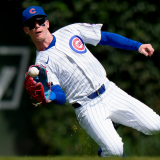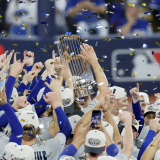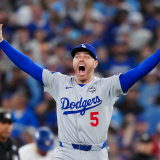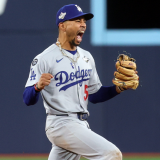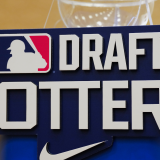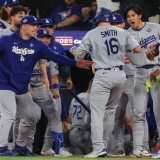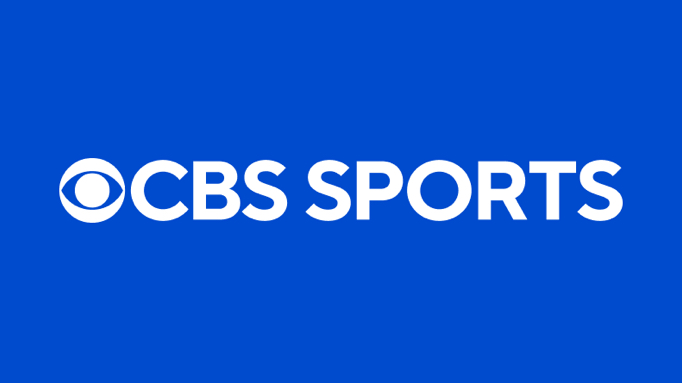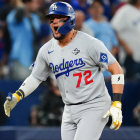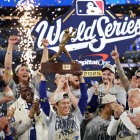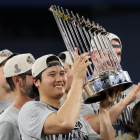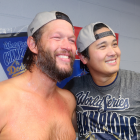
What's next for the Padres? Three concerns facing San Diego as quest for first World Series title continues
The Padres were bounced by the Cubs in the best-of-three Wild Card Series this week
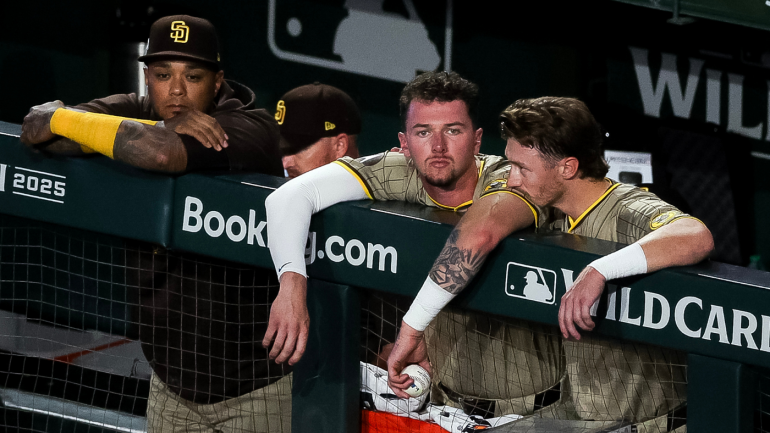
The San Diego Padres saw their 2025 season end on Thursday when they fell to the Chicago Cubs -- in dramatic fashion -- in the deciding game of the National League Wild Card Series. This means the offseason has begun for the still title-less franchise, and the winter ahead may occasion more uncertainty than the Padres have experienced in some time.
That leads to a number of critical questions that the Padres' front office must address in the months ahead, especially if the franchise aims to continue its run of contention. That run has seen the Padres qualify for the postseason in four of the last six seasons, but for a number of reasons that's all at risk moving forward. Let's explore.
1. The rotation is poised for upheaval
This past season, the Padres' rotation wasn't exactly a strength. For 2025, they ranked 16th in starters' ERA among all 30 MLB teams and 23rd in starters' FIP. Free-agent addition Nick Pivetta emerged as an ace, and he'll be a frontline presence moving forward (he's under contract through 2028). Behind him, though, the Padres struggled to get reliable turns from their starters. Dylan Cease still has elite stuff and strikeout numbers, but he was shy of his usual standards at run prevention. More to the point, the 29-year-old right-hander will be eligible for free agency not long after the World Series concludes, which of course means the Padres are at risk of losing him.
Speaking of pending free agents in the rotation, there's also Michael King. King was limited to just 15 starts this season because of shoulder woes followed by a knee issue, but his 2024 conversion from reliever to starter proved he's capable of ace-quality results in the rotation. Like Cease, though, King is slated to hit the market this winter, and the Padres will need him back or someone who can replace his innings at similar projected quality.
Elsewhere, venerable right-hander Yu Darvish still has three years left on his deal, but he struggled with health and effectiveness this season. At age 39, it's fair to wonder how much he offers the Padres from this point forward.
Yes, the Padres will presumably get Joe Musgrove back in the rotation as he completes his recovery from the Tommy John surgery he underwent roughly a year ago, but even if that return goes smoothly the Padres will need to address the possible free-agent losses and maybe find an alternative to Darvish if he's indeed now in his deep-decline phase. As well, deadline pick-up Nestor Cortes is also a pending free agent.
2. The farm system is hollowed out
When it comes to turning up internal solutions, whether it's in the rotation, bullpen (not that the deep and dominant San Diego bullpen needs much help), or lineup, the Padres aren't well positioned to do any of that. That's because the farm system has been aggressively strip-mined by lead decision-maker AJ Preller in order to make win-now trades in recent years. This, of course, isn't a criticism. Execs who try to win games and championships instead of clutching prospects are to be praised, and Preller is a laudable counterweight to the trend of execs who are too meek to go for it.
That said, this is probably the worst and most shallow farm system in baseball right now, and some of the shine has even come off top prospect Ethan Salas thanks to plate struggles and injury. More to the point, there just aren't any reinforcements at the higher rungs of the system who figure to move the needle in 2026. The Padres may need them – not only in the rotation but also in a lineup that's already top-heavy and stands to lose Ryan O'Hearn and Luis Arraez.
3. Future payroll is uncertain
The death of Peter Seidler, one of the very best owners in MLB during his time, was a loss to the Padres in a number of ways. To the credit of the post-Seidler ownership group, they indeed increased payroll this past season after a dip in 2024 following Seidler's passing. For 2026, though, the dollars committed to long-term contracts fall from $220 million this past season to a bit more than $150 million for 2026. Will ownership plug that hole in the name of contending once again, or will some level of reset take hold in San Diego? That's perhaps the most pressing question of all moving forward. The paltry farm system adds urgency to this question because Preller will need to be free to add via free agency and maybe salary-assuming trades if he's going to fortify for another run. That all depends upon the commitment level of ownership.
In addition to addressing the rotation, there's also room for a much-needed impact bat to accompany Fernando Tatis Jr., Manny Machado, and Jackson Merrill. There's an opportunity to upgrade first base with Arraez perhaps headed elsewhere, or Jake Cronenworth could shift there, which would mean Preller could add a second baseman. As well, betting on Ramón Laureano to repeat his outlier season at the plate via the club option they hold is a dicey proposition. There are market opportunities to make a splash in left field, but that will require payroll investment.
The National League West figures to be competitive once again, perhaps even more than it was in 2025. The presence of the third wild card spot in each league of course lowers the bar for contention considerably, and even teams that squeak into the postseason are capable of winning it all. That's cause enough to go for it, and the Padres indeed should. That, though, will require ongoing commitment from ownership, and the extent to whether there is that commitment will tell the story of the Padres' winter.


